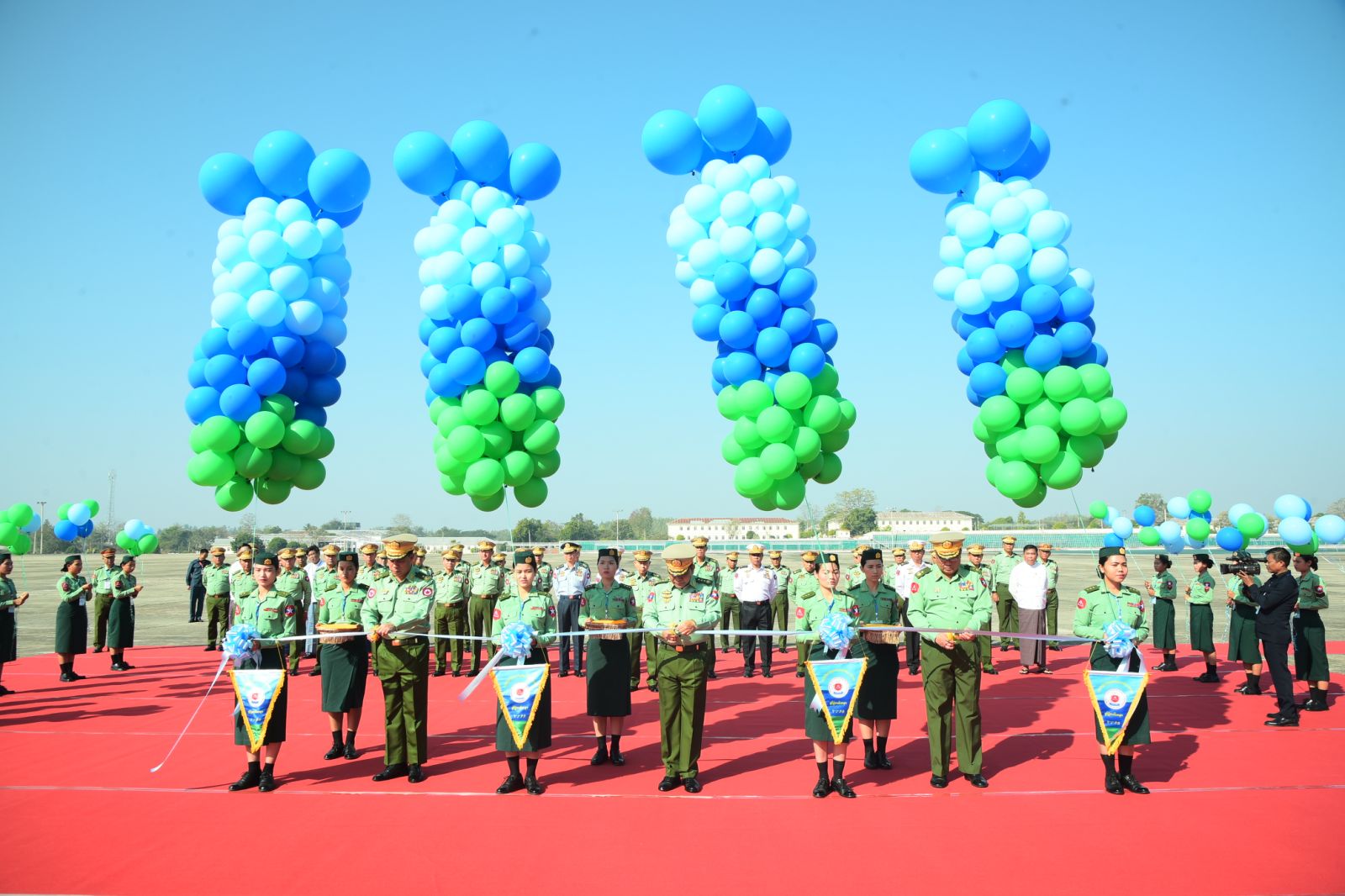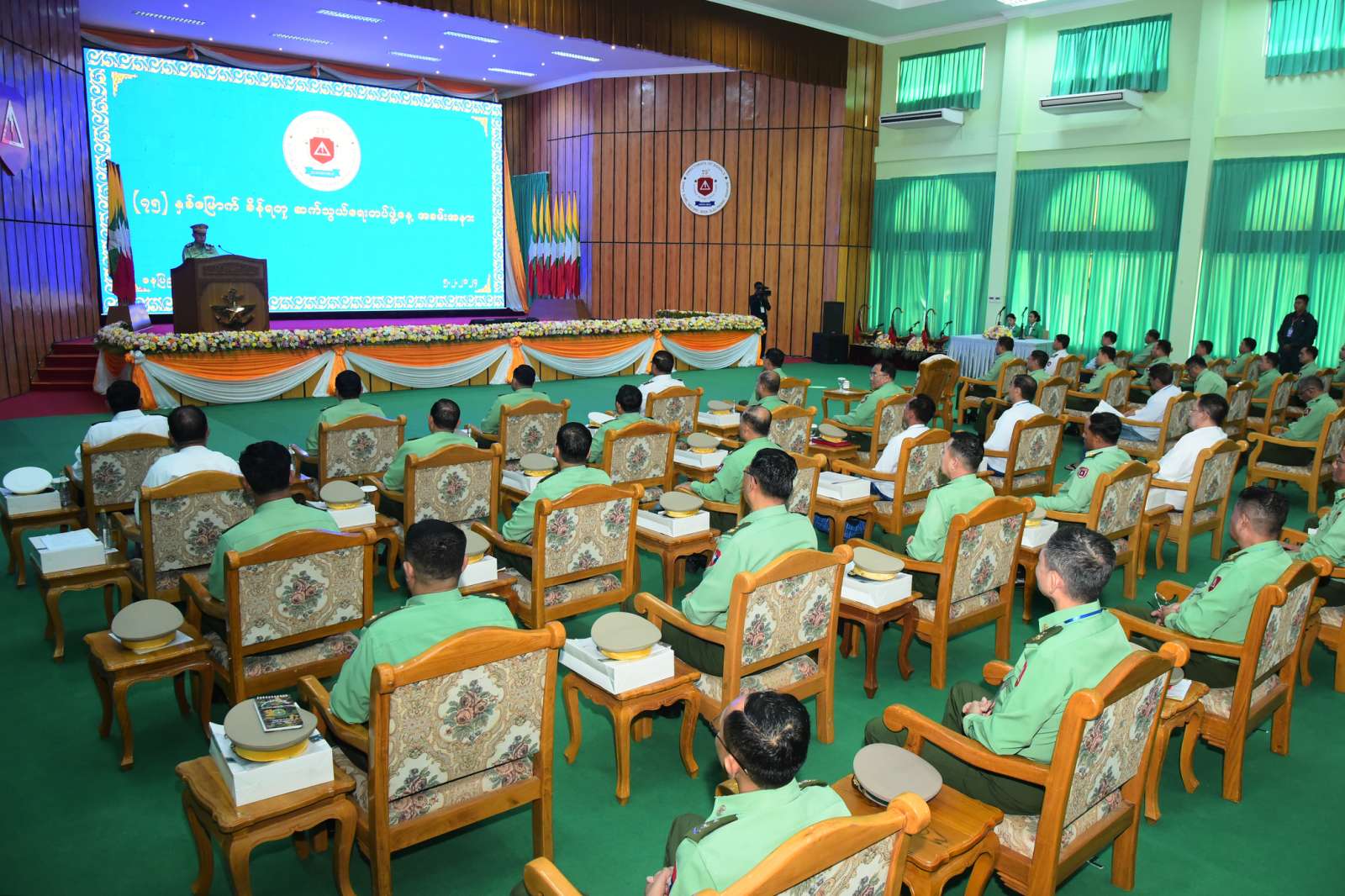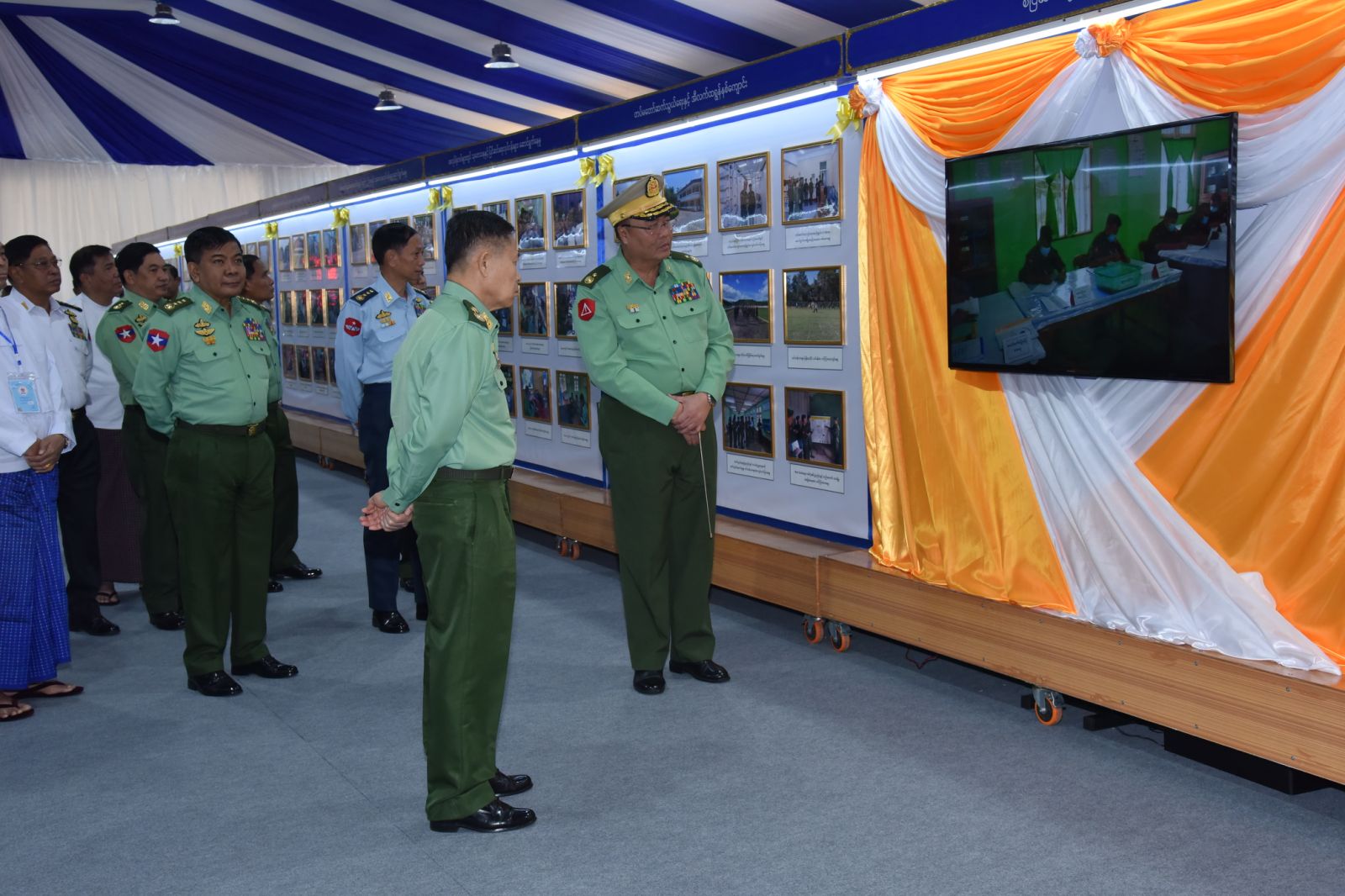SAC Vice Chairman Deputy Commander-in-Chief of Defence Services Commander-in-Chief (Army) Vice-Senior General Soe Win delivers honorary speech at the ceremony to mark 75th Anniversary (Diamond Jubilee) Signals Corps Day
Nay Pyi Taw February 5
Vice Chairman of the State Administration Council Deputy Commander-in-Chief of Defence Services Commander-in-Chief (Army) Vice-Senior General Soe Win attended the ceremony to mark the 75th Anniversary (Diamond Jubilee) Signals Corps Day at Hsinbyushin Hall of the Transit Centre in Nay Pyi Taw this morning.
Also present at the ceremony were SAC members, Union ministers, senior military officers from the Office of the Commander-in-Chief, the commander of Nay Pyi Taw Command, retired senior officers from the Signals Corps, officials and guests.
Chief of the General Staff (Army, Navy and Air) General Maung Maung Aye, Commander Maj-Gen Saw Than Hlaing and Director of Signals Maj-Gen Tun Tun Oo cut the ribbon to open the Signals Corps Day. The Vice-Senior General unveiled the signboard to mark the 75th Anniversary (Diamond Jubilee) Signals Corps Day and posed for documentary photos with attendees.
Speaking on the occasion, the Vice-Senior General delivered a speech, saying that today is the 75th Anniversary (Diamond Jubilee) Signals Corps Day as the signals corps was involved in forming the Myanmar Tatmadaw in the Myanmar’s in pendence struggling period. Since establishment of the Tatmadaw, the signals corps has been dutifully serving in accord with the mottos: “Be quick, be correct, be safe and successfully launch the electronic operations”.
In looking back the history of the Signals Corps, it was initiated in the independence struggle before World War II. A total of 30 soldiers who returned from Pakistan after attending the communications course in 1937 was based to form the Burma Signals in Maymyo now called PyinOoLwin in 1939. After regaining independence, the Burma Signals was reconstituted as the signals training company (Maymyo) and the signals company (Mingaladon) in 1948.
In around 1949 of the post-independence era, the country faced the most armed insurgency, and the country was in the state of Yangon Government. At that time, a large number of communication devices lost, and most of the areas in Myanmar encountered interruption of communication on 31 January 1949.
At that time, remnant signals officers and other ranks made utmost efforts in repairing the communication devices to resume communications. Hence, radio communication resumed across the nation on 5 February 1949. Such a day 5th February 1949 when the whole Tatmadaw could resume communications was designated as the Signals Corps Day as a significant day.
The Directorate of Signals was formed on 1 January 1956 in order to control extended signals units in the post-independence era, and its establishment was improved on 1 July 1958.
It can be seen that the Signals Corps serves its primary duties of no communications as well as contributes to TV transmission sector whenever the country faces the state of emergency.
In the incidents when the country faced natural disasters of cyclonic storm Nargis in 2008, cyclonic storm Giri in 2010 and cyclonic storm Mocha in 2023, the Signals Corps created communications with utmost efforts amid difficulties in order to ensure smooth process of supervision over the rescue and relief teams
It is visible that the Signals Corps plays a key role in the Tatmadaw but development process of the State. As the first-ever Fibre Optic Network of Myanmar was built in 2001 by the corps for military and civilian use, the information communication technology has been gaining development momentum.
Moreover, those from the Signals Corps are taking training with collaborative efforts in order to succefully launch the electronic warfare (EW) which is essential for the current wars.
Officers and other ranks from the Signals Corps have been successfully securing accomplishments of missions and visions assigned by the superiors during the 75-year period. Hence, the corps secured the honorary records of 168 winning the honorary medals on excellent performance in administration field, social field, industrial field and technological fields including one Sithu title winner, one Pyidaungsu Zarni title winner, one Thiri Pyanchi title winner, seven Zeya Kyaw Htin title winners and 27 gallantry certificate winners.
The Signals Corps was born in the independence struggle period together with the Tat[1]madaw, and it has been serving the interests of the Snationality and Tatmadaw in successive eras. The Diamond Jubilee Signals Corps has to strive for preserving its fine traditions as a reliable corps of the Tatmadaw in the future and has to serve the communication technologies, the lifeblood of the Tatmadaw for its longterm existence.
Director of Signals Maj-Gen Tun Tun Oo reported on the brief history of the corps. Then, a documentary video clip on diamond jubilee Signals Corps was presented. Members of the corps presented a song in honour of the 75th Anniversary (Diamond Jubilee) Signals Corps Day.
The director presented a commemorative gift to mark the significant day to the Vice - Senior General.
The Vice-Senior General cordially greeted retired senior signals officers and visited the booths of the corps.





